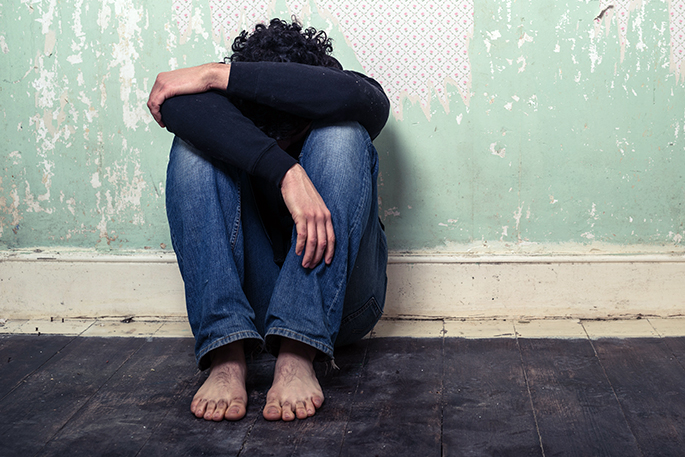More people committed suicide in the 2015/16 year than were killed on New Zealand roads, according to suicide statistics released today by the Chief Coroner.
Chief Coroner Judge Deborah Marshall has today released the annual provisional suicide statistics, which show 579 people died by suicide in the 2015/16 year. For the 12 months to October 18 2016 there were 329 road deaths.
It is the highest number of suicide deaths since the provisional statistics were first recorded for the 2007/08 year, and follow last year's total of 564, which was then the highest.
But on a population basis, the suicide rate has fallen slightly to 12.32 per 100,000 population, compared with 12.65 per 100,000 for the 2010/11 year.
Judge Marshall says the rate remains constant and that New Zealand has a long way to go to turn the unacceptably high total around.
There needs to be more discussion about suicide prevention and how family, friends and colleagues can identify someone at risk and help them get professional support, says Judge Marshall.
'Everyone should recognise the importance of taking suicidal thoughts seriously and knowing where to get help.”
Mental Health Foundation chief executive Shaun Robinson says they're deeply saddened by the provisional statistics. On behalf of the organisation, he sends their deepest condolences to the families, whānau, colleagues and friends who have lost someone they loved to suicide.
'It's not uncommon for people who feel suicidal to believe their loved ones would be happier without them, that they are a burden to their families. Today it's important to acknowledge that this is profoundly untrue.”
The foundation strongly agrees with the Chief Coroner that family, friends and colleagues need to be assisted to support loved ones they are concerned about.
And while the numbers are distressing, the Shaun and the foundation is encouraging people to remember that suicide is preventable.
Factors which contribute to people feeling suicidal include experiencing depression or other mental health problems, poverty, family violence, abusing substances such as drugs or alcohol and not being able to access support to cope with distress.
'To prevent suicide in New Zealand, we must take a hard look at these factors and work to address them. We know some people have lost hope that things can get better - too many of us have come to accept the way things are for our most vulnerable people and to believe that things cannot change.”
Having suicidal thoughts or feelings is not uncommon. Many people will think of suicide at some time in their lives, and the vast majority will recover.
'In most cases friends, whānau, workmates and neighbours will provide support along with professional services, and people will recover and live well.”
THE FIGURES:
More women are ending their lives. Traditionally the ratio has been about one woman for every three men. Thirty four women more committed suicide this year, while male suicides dropped by 19. The ratio of female to male suicides is 1 : 2.41, which is the closest since records began in 2007/08.
More people are waiting until their mid-twenties to end it all. The 25-29-year-old age cohort recorded the highest number of suicide deaths (66), with the 20-24-year-old cohort behind on 60 suicide deaths. Last year the 20-24-year-old cohort had the highest number of suicide deaths with 61, followed by the 40-44-year-old cohort with 58 suicide deaths.
While Māori suicide numbers are down by one from last year at 129, more Māori women are committing suicide than ever, up from nine last year to 47, the highest on record. Māori male suicide has dropped by 10 from last year.
Canterbury, based on the DHB geographic region, recorded its highest suicide total since records began before the 2010 earthquake in 2007/08. Seventy eight people committed suicide in 2015/16. The previous highest total was 74 in 2009/10.
The most common method was hanging, strangulation, suffocation at 59 per cent of all suicides, followed by poisoning by overdose at 14 per cent, and poisoning by gases and vapours at eight per cent. Firearms or explosives and jumping off high places are even at five per cent, closely followed by transport at four per cent.
The suicide statistics relate to provisional suicide figures and differ slightly from the Ministry of Health figures.
They include active cases before Coroners where intent has yet to be established therefore may eventually be found not to be suicides. In addition Ministry of Health figures are recorded by calendar year.



2 comments
Jmac
Posted on 18-10-2016 19:54 | By JohnMac
The figures really show this to be a huge social issue that must be addressed. I do believe a close analysis by region would allow a close look at areas where this tragedy is most common. By looking at high risk locations then a study over time for each area and reasons these areas do have higher rates can allow a closer study rather than looking at NZ as a whole and trying to come up with answers. This has obviously done little to help to date. Identify the symptoms and risk factors and educate to encourage awareness at the very earliest stages to stop the intent before it develops to far. Fight for life etc. has not done much as I see it and only makes those involved feel they are contributing. We need far more science than this.
Suicide Choice!?
Posted on 19-10-2016 08:32 | By A Different Take
The euthanasia bill will no doubt lend credence and normalise the taking of one's life. So the real "tragedy" is opening the door even wider for the depressed to soon legally take their lives. Because that is where this bill is heading and has gone in countries that have liberalized so called 'mercy killings!'
Leave a Comment
You must be logged in to make a comment.